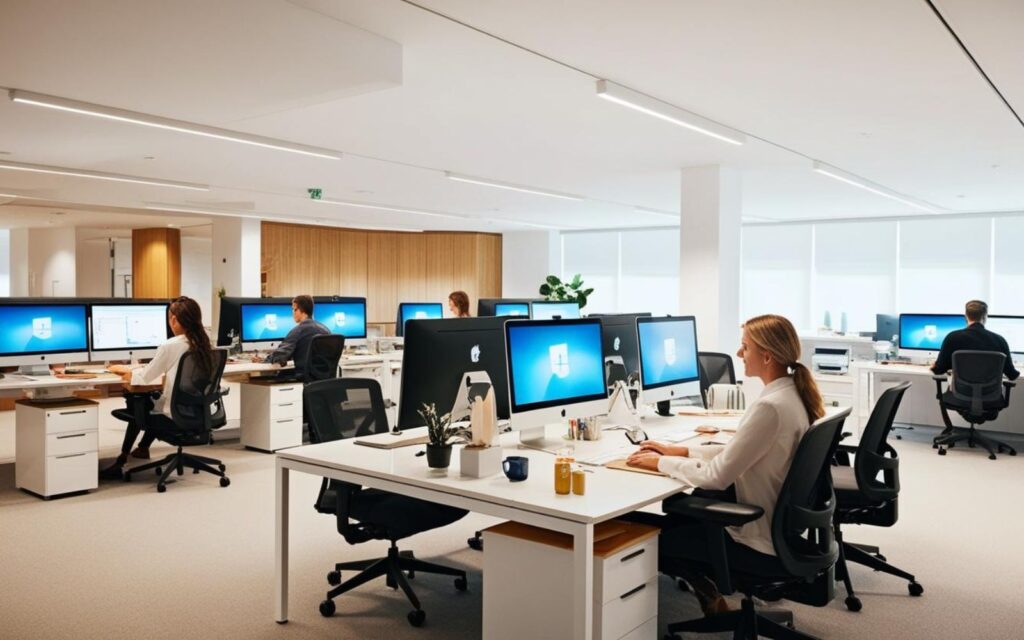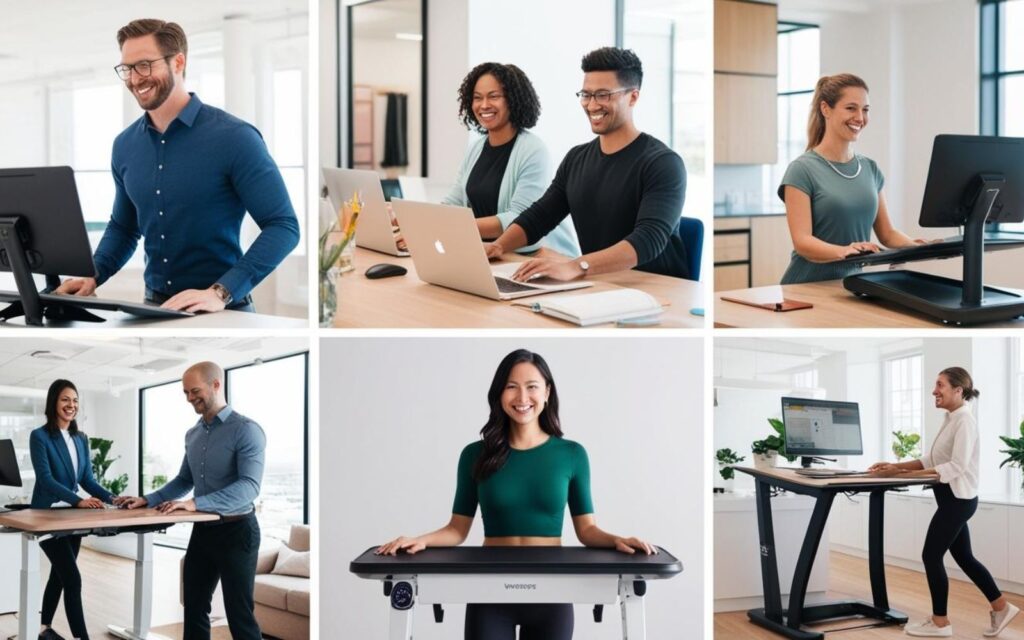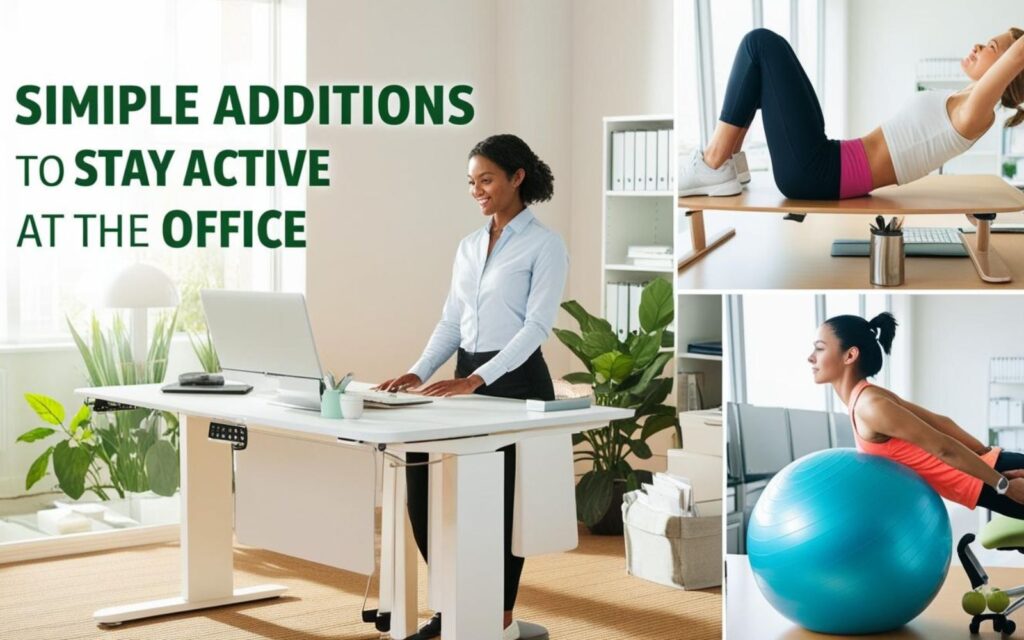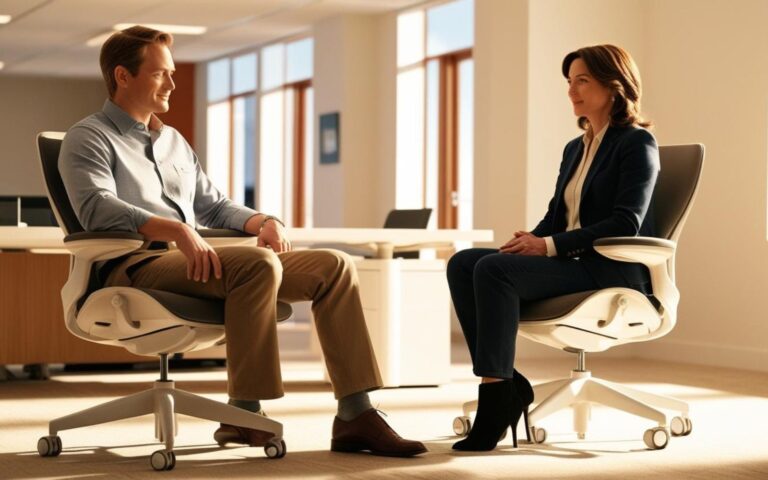Active Workstations for a Healthier Office: Boosting Your Productivity and Wellness

Did you know that prolonged sitting at your desk can increase the risk of serious health problems like heart disease, poor posture, and muscle stiffness? Unsurprisingly, workers are turning to active workstations for a healthier office to combat the adverse effects of sitting for long hours.
From sit-stand desks to treadmill desks, these modern solutions can enhance productivity, promote movement, and improve overall well-being.
In this guide, we’ll cover everything you need to know about active workstations for a healthier office and how to set up your workspace to encourage a healthier lifestyle.
Key Takeaways
- Active workstations promote movement and reduce the health problems of a sedentary lifestyle.
- Adjustable desks, exercise equipment, and treadmill desks help you stay active while working.
- Movement improves posture, blood circulation, and energy levels throughout the day.
- Small changes like using a desk drawer or an exercise ball can foster healthier habits.
What Are Active Workstations?

An active workstation is any desk setup that allows movement during the workday.
Instead of sitting still for more extended periods, you can alternate your body position, switch between sitting and standing, or even add light exercise while working.
Types of active workstations include:
- Sit-stand desks: Desks that allow you to alternate between sitting and standing by adjusting the height.
- Treadmill desks: Combine a slow-moving treadmill with a workspace to encourage walking during work.
- Desk bikes: Stationary bikes are designed to fit under your desk so you can pedal while you work.
Active workstations come in various sizes to fit small office spaces or large communal rooms, making them accessible to most workplaces.
The Health Benefits of Active Workstations for a Healthier Office

1. Combatting the Negative Effects of Prolonged Sitting
Prolonged sitting can lead to poor circulation, heart disease, and weight gain. You can counter these effects with more movement by using a sit-stand workstation.
Key Benefits:
- Increases blood flow to your brain and muscles, keeping you energized.
- Reduces the increased risk of cardiovascular disease caused by sitting for long hours.
- Prevents muscle stiffness and joint pain by promoting physical activity.
2. Better Posture and Less Pain
Active workstations support better posture compared to a regular chair and fixed desk setup. Alternating positions throughout the day strengthens your core muscles and prevents slouching.
Posture Benefits:
- Less strain on your back and neck.
- Improved spinal alignment and reduced pain.
- It helps reduce the harmful effects of poor posture, such as shoulder and wrist discomfort.
3. Increased Energy and Productivity
Light movement, such as using a stand desk or treadmill desk, improves cognitive function and productivity.
Studies have shown that taking breaks to move during long meetings or phone calls can increase focus and creativity.
Why It Works:
- Physical movement releases endorphins, boosting mood.
- Encourages higher energy levels during long work hours.
- It improves heart rate and prevents the sluggishness associated with sitting for extended periods.
Choosing the Best Active Workstation

When selecting an active workstation for your office, consider your space, job role, and goals. Here’s a closer look at the options:
1. Sit-Stand Desk
Sit-stand desks (also called height-adjustable desks) are versatile and straightforward. You can switch between sitting and standing by pushing a button or lever.
Key Features:
- Adjustable height for different body positions.
- Available in different designs, from full desk replacements to desk converters.
Tips for Success:
- Alternate every thirty minutes between sitting and standing to avoid fatigue.
- Use an anti-fatigue mat for better comfort.
- Keep your computer monitor at eye level to maintain proper posture.
2. Treadmill Desk
Want to squeeze in more steps? A treadmill desk lets you walk at a slow pace while working.
Why Use It:
- It helps you burn more calories.
- It keeps your blood circulation steady throughout the day.
- Great for low-focus tasks like reading or making conference calls.
Pro Tip: Start slow-walking at 1 to 2 mph is enough to stay active without affecting productivity.
3. Desk Bike
A desk bike or under-desk cycle provides a low-impact way to stay active.
Benefits:
- Engages your legs while working on tasks.
- Combats a sedentary lifestyle by promoting constant movement.
- It is easy to adjust the resistance to suit your comfort level.
Simple Additions to Stay Active

If you’re not ready for a full active workstation setup, here are some more minor changes you can make:
- Exercise Ball: Swap your regular chair for an exercise ball to engage your core muscles while sitting.
- Walking Breaks: Take short walking breaks during long tasks or phone calls.
- Under-Desk Pedals: Compact and affordable, these offer a mini cardio workout without taking up much space.
- Fitness Bands: Keep resistance bands at your desk to stretch your muscles during downtime.
How to Encourage Movement in the Workplace

1. Flexible Workspaces
Create zones with height-adjustable desks, treadmill desks, and standing areas to allow employees to choose their preferred setup.
2. Incorporate Healthy Habits
Encourage short breaks every hour for stretching or walking. Host fitness challenges to foster a culture of well-being.
3. Active Meetings
Hold “walking meetings” or stand-up discussions instead of seated meetings to promote more movement.
Addressing Common Concerns

Some employees may hesitate to try active workstations. Here’s how to address those concerns:
- “I’ll get tired standing too long.” Active workstations are about alternating—not standing all day. Use a mix of sitting, standing, and walking.
- “It’s too distracting.” Studies show that light movement improves cognitive function, helping you stay productive.
- “It takes up too much space.” Many adjustable desks and under-desk cycles are designed to fit small office spaces.
Summary
Active workstations are an excellent way to combat the adverse effects of prolonged sitting and improve overall employee wellness.
Whether it’s a sit-stand workstation, treadmill desk, or desk bike, each option offers unique ways to stay active and maintain a healthier lifestyle.
Small additions, like an exercise ball or walking during conference calls, can significantly improve your well-being and prevent long-term health problems.
Companies can foster better health, higher productivity, and happier employees by creating a more active workplace.
Frequently Asked Questions
Are Active Workstations Worth the Investment?
Yes! Active workstations can reduce the increased risk of cardiovascular disease, improve posture, and boost energy levels, leading to more productive employees.
How Much Time Should I Spend Standing at My Desk?
Experts recommend alternating every 30-60 minutes between sitting, standing, or light physical activity to avoid fatigue.
Can I Lose Focus with a Treadmill Desk?
Not at all! Light walking during tasks like reading or brainstorming can enhance focus and creativity.
Is an Exercise Ball a Good Replacement for a Regular Chair?
An exercise ball helps engage your core, improve posture, and increase blood circulation. However, it may not be suitable for all-day use.
How Can I Make My Office More Active?
Incorporate height-adjustable desks, offer under-desk bikes, encourage walking during meetings, and implement wellness initiatives to keep your team active and healthy.





